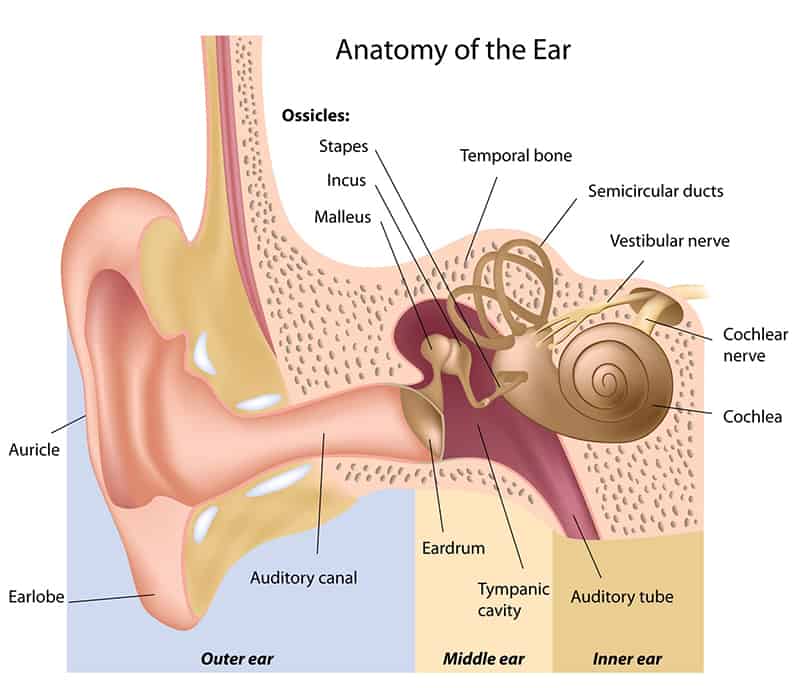Most of us take our hearing for granted, but the ability of the human ear to collect and interpret sound is the result of an amazing and delicate mechanism.
Sound is made up of vibrations that travel as waves through the air, much like the waves on the surface of water. Our ears pick up the waves and convert them into electrical signals which our brain interprets as sound.
 The ear is divided into three parts:
The ear is divided into three parts:
The outer portion of your ear that you see is called the pinna.
You have one pinna on each side of the head to help you localise where sound is coming from. They are shaped to collect and direct sound into the ear canal. Once the waves enter your ear canal, they meet your eardrum, a thin membrane that vibrates in tune with the waves that hit it.
The energy from these vibrations is transmitted to three tiny bones of the middle ear called the malleus, incus and stapes; these are the smallest bones in your body and are also known as the hammer, anvil, and the stirrup because of their shape.
These three tiny bones turn vibrational energy into mechanical energy, and the energy is carried to a snail-shaped organ, called the cochlea.
The cochlea is filled with fluid and houses thousands of tiny hair cells that transmit sound information to the brain. As energy is passed to the cochlea from the malleus, incus and stapes, the fluid in the cochlea moves in a specific pattern, and the hair cells are stimulated. The hair cells convert this energy into nerve impulses that are then carried to the brain by the auditory nerve. Your brain can then interpret the sound collected from both ears, even when it is mixed with background noises or interference.
Unfortunately, there are a number of outside influences that can damage the tiny hair cells that turn energy into nerve impulses, making it harder for your brain to hear and interpret sounds. Exposure to loud noise, such as working in a factory, loud music or other noisy environment is one way these hair cells can be damaged. They can also be affected, either temporarily or permanently by sudden extreme noises, trauma and by some drugs. But of course the commonest form of hearing loss is caused by advancing years. As we age so our hearing abilities reduce.
THE ABILITY OF THE HUMAN EAR TO COLLECT AND INTERPRET SOUND IS THE RESULT OF AN AMAZING AND DELICATE MECHANISM!
Whilst it is difficult to prevent the damage caused by the ravages of time, you can prevent your hearing from being damaged by wearing ear protection when you are exposed to by extreme noise. Simple earplugs or ear defenders are readily available and if used correctly will offer protection. If you are in a noisy environment but have a need to still hear what it is going on around you, electronic ear defenders are available, or you can have special custom ear protection made for you by an audiologist.

Please also remember that if you listen to a lot of music, particularly using personal listening devices such as earbuds or headphones, you can cause damage to your hearing over time if you listen with the volume turned up too high. You may not even be aware of this if you habitually listen in noisy environments such as trains – when commuting for example.
Noise-cancelling headphones can be useful in these circumstances.